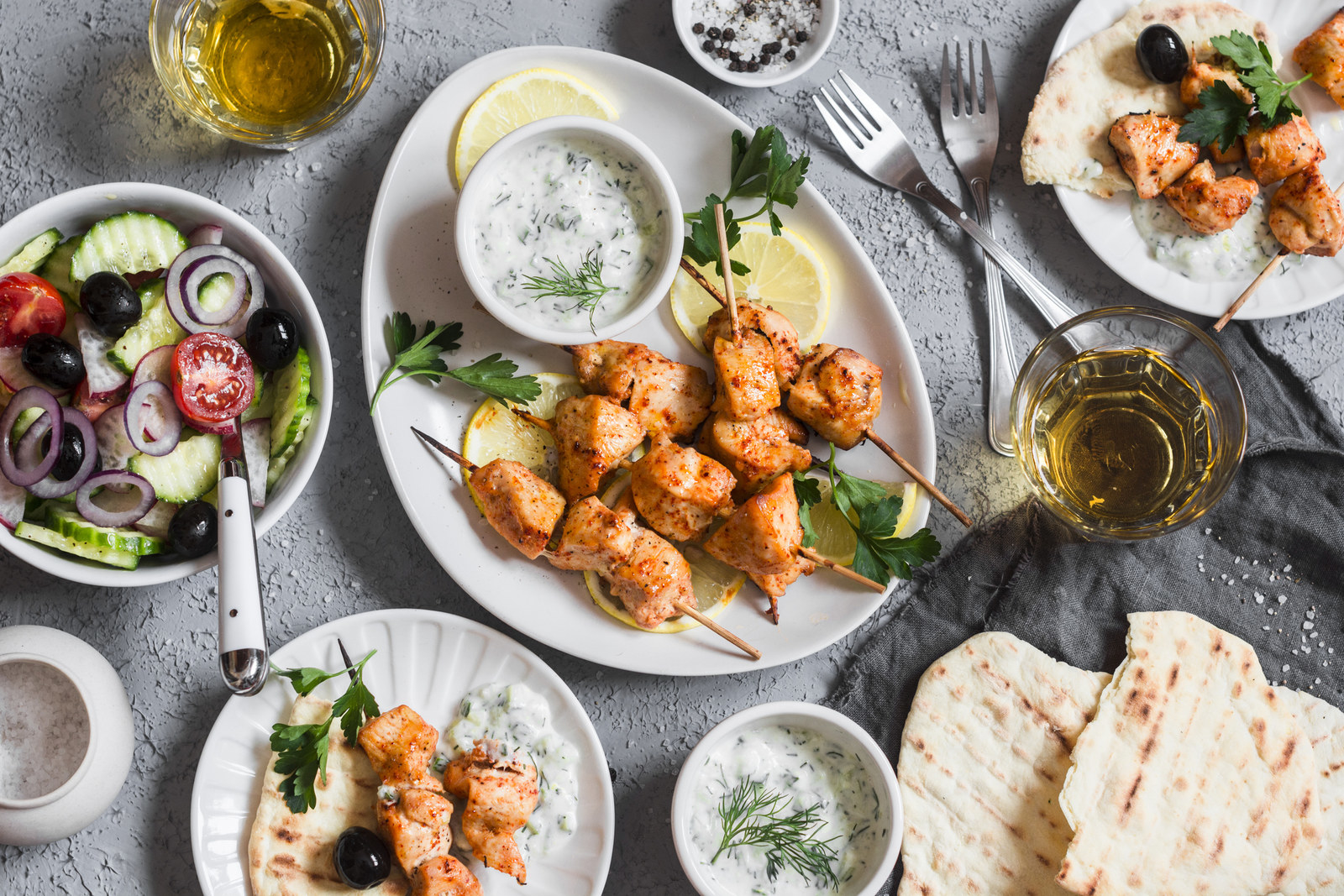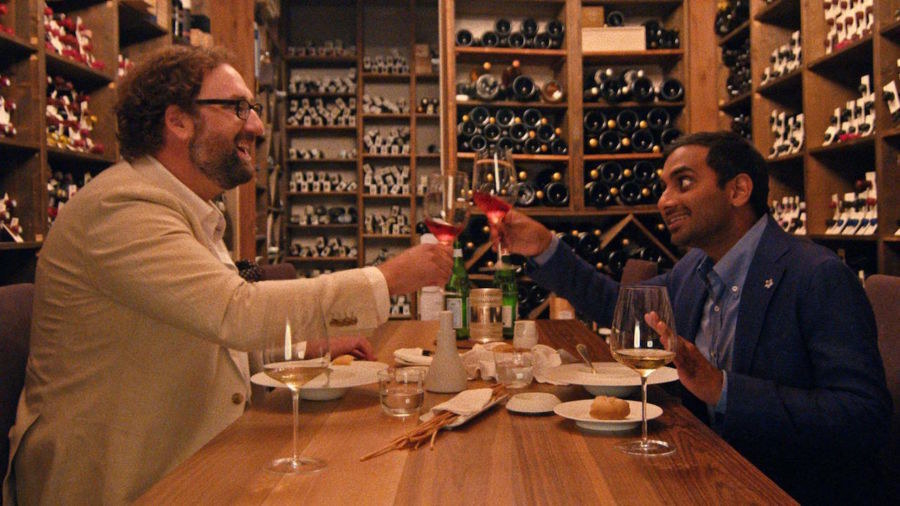Raise your hand if you're confused by the world of wine. After all, most of us are. So we reached out to three sommeliers to try and demystify some of the confusion around wine. They revealed nine common myths about wine that it's time to stop believing.

But first, meet our wine experts. Arvid Rosengren is the wine director at NYC's Legacy Records. In 2016, he won the Contest of the Best Sommelier in the World (NBD).
Jordan Salcito is a sommelier and the Director of Wine Special Projects at Momofuku. She's also the founder of RAMONA and Bellus Wines.
And Dustin Wilson is a master sommelier and owner of Verve Wine. If you've ever seen the Netflix movie series "Somm," you'll probably recognize him.
Now, onto the myth-busting:
1. THE MYTH: White wine should be served ice-cold.

THE TRUTH: You've probably heard the idea that red wine should be served room temperature while white wine should be served ice cold. In reality, though, if the wines are good, you'll achieve the best results if both red and white wines are served in between ice cold and room temperature, says Rosengren. If white wine is served too cold, you won't be able to taste the nuances in its flavor, and if red wine is served too close to room temperature, it could taste flat. "When it doubt, chill your wine," says Rosengren, but be careful not to make it too ice cold.
2. THE MYTH: Pair red wine with meat and white wine with fish.

THE TRUTH: While this is a safe rule of thumb, there are plenty of exceptions. When it comes to fish, you can "go with lighter reds with low tannins like Beaujolais, Trousseau or Poulsard from the Jura, or Schiava from northern Italy," advises Wilson. The same mentality goes for meat. While a fatty, juicy steak would overpowered by a zesty, light-bodied wine like Sancerre, there are certain whites that can stand up to meat. "You need something that is bold enough to stand up to the flavor of whatever meat your eating," says Wilson. "Like a big Chardonnay or maybe a Rhone valley white to do the trick."
3. THE MYTH: Screw-top wines are garbage.

THE TRUTH: In the past, screw top wines were considered cheap or inferior to wines sealed with a cork. But today, the distinction between cork and screw-top bottles has become much hazier. Thanks to new technology, screw tops can actually be much more more dependable than corks, which vary in their ability to prevent oxidation within the bottle. "Sure, most of the world's fancy wine is bottled with cork, but that has more to do with perception," says Rosengren. "For just about anything intended to be drunk within a year or two after bottling, screw cap is great," he assures.
4. THE MYTH: Chardonnay is always buttery and rich.

THE TRUTH: Chardonnay has an unfortunate reputation because people assume this varietal is always big, rich, and buttery. But the truth, says Salcito, is that "Chardonnay is actually an incredibly neutral grape that gets its taste from the soil in which it's grown and the style used by the winemaker." For Chardonnays that aren't rich and buttery in the slightest, look for bottles from a cool climate region in California like Santa Barbara or the region of Chablis in Burgundy. "Wines from the entire region of Chablis are bright, citrusy, and taste of fresh lemon and crushed sea shells," says Salcito.
5. THE MYTH: Champagne should be served in flutes.

THE TRUTH: Sure, people enjoy drinking Champagne in flutes for that fancy feeling, but if you pop a bottle of bubbly for your guests and don't have flutes on hand, you're not doing the wine a disservice. It takes a long time to make Champagne, and throughout the process the sparkling wine develops complex flavors and aromas like butter, toast, white cherry, and even a certain nuttiness. According to Rosengren, you could serve Champagne in a flute, but "if the wine is decent enough, a wider wine glass will express those aromas better."
6. THE MYTH: White wine does not contain sulfites.

THE TRUTH: Salcito said she often hears people say they only drink white wine because they are allergic to sulfites. In reality though, white wines actually contain more added sulfur dioxide than reds, she explains. Sulfites occur naturally during the fermentation process, so all wines — red, white, and rosé — contain some level of them. That being said, the amount of sulfites in any bottle of wine is actually quite small. More sulfites exist in common foods like eggs, raisins, and even ketchup. "if you drink any decently made wine, there are less sulfites than in most condiments that you buy everyday," explains Wilson. If you're worried about sulfites, Salcito suggests drinking organic wines, which generally contain very low levels.
7. THE MYTH: All wine is meant to be aged.

THE TRUTH: While you would be wise to age a great 2007 vintage of Cabernet Sauvignon from Napa Valley, not all wine is meant to be aged. "All wines have different lifespans," explains Salcito, which is dependant on tons of factors such as the soil it's grown in, the quality of the grapes harvested in a particular year, and the techniques and decisions a winemaker uses during the wine making process. "Many rosés, for example, are meant to be drunk in one season, while fine red wines can improve for decades," Salcito adds. So how do you know when to drink a wine young and when to keep it in the cellar? Salcito suggests reading up on the wine before you buy it or consulting your trusted wine shop or sommelier for advice.
8. THE MYTH: Natural wines don't lead to hangovers.

THE TRUTH: If you drink a lot of wine (natural wines included), you're probably going to feel hungover. Natural wines are still alcoholic, and "alcohol is normally what makes you feel bad after drinking it, not tannins or, again, sulfites," says Wilson. If you get headaches from drinking wine, keep an eye on the alcohol content. Wines with a higher alcohol by volume are more likely to give you a hangover. "Just like drinking a bottle of Coors light (4.2% abv) is not the same as drinking a bottle of Dogfish Head 90 Minute IPA (9% abv), a small change in the alcohol content in a wine can make a big impact on how you feel," he adds.
9. THE MYTH: Sweet wines should be paired with dessert.

THE TRUTH: Generally speaking, sweet wines are meant to be drunk with dessert, but there is a whole spectrum of sweetness to think about. According to Wilson, "there are a number of wines out there that have a touch of sweetness, but that are not at dessert level sweet." For such wines, he suggests keeping an eye out for German wines that have "Kabinett" on the bottle, Rieslings labeled "Spatlese" or some white wines from Vouvray in France's Loire Valley.
For more mind-blowing wine and booze facts, check out these posts:
-13 Mind-Blowing Facts About Buying Wine And Liquor At Costco
-I Took A Six-Month Wine Class, And Here Are The Coolest Things I Learned
-We Asked The Pros How To Buy Amazing Wine Without Spending Your Whole Paycheck
